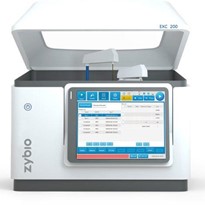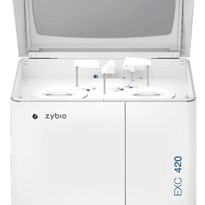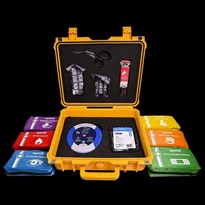Biochemistry analyzers – also known as clinical chemistry analyzers – are vital instruments in medical laboratories for measuring chemicals and biomarkers in patient samples. They play a central role in diagnosing diseases, monitoring organ function, and guiding treatments by analyzing blood, urine, and other fluids. This article provides a detailed look at biochemistry analyzers with a focus on Australia and Oceania, covering their clinical applications, technical specifications, equipment categories, integration with information systems, maintenance needs, regional market considerations, and emerging innovations. The aim is to inform laboratory technicians, hospital administrators, and biomedical engineers with a professional, up-to-date overview.
Clinical Applications of Biochemistry Analyzers
Biochemistry analyzers are used across a range of clinical settings to perform diagnostic tests on patient samples. In hospital core laboratories and pathology labs, these analyzers run high-volume blood chemistry panels (e.g. metabolic panels, liver function tests, cardiac enzymes) that inform diagnoses and monitor conditions. Common analytes include metabolites like glucose and cholesterol, enzymes, electrolytes, specific proteins, and drug levels. By measuring such indicators, the analyzers provide critical data on a patient’s renal, cardiac, liver, and metabolic function, as well as toxicology and therapeutic drug monitoring. For example, levels of glucose, urea, and bilirubin in blood are assessed to manage diabetes, kidney disease, and liver failure respectively. These results enable clinicians to diagnose disorders and track treatment efficacy with quantitative precision.
Point-of-care applications are another important domain. Many biochemistry analyzers (often scaled-down or specialized versions) are deployed in emergency departments, intensive care units, clinics, and even physician office labs to deliver rapid results on-site. At the point of care – such as a patient’s bedside or a GP’s office – compact analyzers can test critical parameters like electrolytes, blood glucose, cardiac markers, or renal function within minutes, guiding immediate clinical decisions. In Australia, for instance, handheld devices and small benchtop analyzers are used in remote clinics and emergency settings to provide lab-quality results without sending samples to central labs. These point-of-care analyzers bring diagnostics closer to the patient, improving turnaround time for urgent tests. Notably, clinical chemistry analyzers are versatile enough to be found in settings from large hospital labs to small clinics and even mobile/field labs. They are an indispensable tool for pathology services throughout the region, ensuring that whether in a major Sydney hospital or a rural healthcare center in the Pacific Islands, clinicians have access to reliable biochemical test results.
Types of Biochemistry Analyzers: Benchtop vs. High-Throughput Systems
Biochemistry analyzers come in various sizes and throughput capacities to serve different laboratory needs. The two broad categories are benchtop analyzers and high-throughput floor-standing analyzers, each with distinct use cases:
- Benchtop Analyzers: These are compact units designed to sit on laboratory benches. They typically handle low-to-mid sample volumes and have moderate throughput, making them suitable for small to medium laboratories, specialty labs, or as backup instruments. Benchtop analyzers often process a few hundred tests per hour. These models have a smaller footprint and can even be portable; some point-of-care and clinic analyzers are essentially small benchtop devices with user-friendly interfaces. Most routine analyzers are intended for benchtop use, and even bedside/portable units are available. Such portable systems can be cart-mounted or hand-carried, ideal for on-site testing in critical care or remote locations.
- High-Throughput Floor-Standing Analyzers: These are larger, often modular systems built for high-volume laboratories (such as central hospital labs and commercial reference labs). They have substantially higher throughput – often processing several hundred to thousands of tests per hour – and can run many assays in parallel. These analyzers usually require floor space and may be integrated into automated laboratory tracks. A floor model can be physically quite large and heavy. Such systems often allow continuous loading of samples and reagents and can have multiple modules (e.g. separate modules for chemistry and immunoassay). They are designed for nonstop operation, high reliability, and minimal downtime in busy labs.
In between these categories, manufacturers offer scalable solutions. Many product lines are modular, allowing labs to start with a benchtop unit and later upgrade to add modules or connect multiple analyzers to increase capacity. There are also semi-automated analyzers which require manual sample preparation and are used in very low-volume settings or as a fallback; however, in most modern Australian labs, fully automated systems are the norm. The choice of analyzer category depends on the workload: small clinics opt for compact, cost-effective analyzers, whereas tertiary hospitals invest in high-throughput systems (or multiple networked analyzers) to handle the large test volumes and fast turnaround requirements.
Key Technical Specifications and Features
Several technical specifications and design features are important for optimal performance in the lab:
- Throughput and Capacity: Throughput is measured in tests per hour and indicates how many assays an analyzer can perform in a given time. High-volume laboratories demand analyzers that can process hundreds to thousands of tests hourly. For example, an analyzer might have the capacity to run 1,000–2,000 tests/hour, with higher-end models reaching even above 2,000 tests/hour for routine chemistry panels. Throughput goes hand-in-hand with features like the number of samples that can be loaded at once (sample rack or carousel capacity) and whether the system supports random access processing. Random-access analyzers allow samples with different requested tests to be processed in any order, enabling efficient continuous operation and prioritization of urgent (“STAT”) samples. By contrast, older batch analyzers run one test on many samples sequentially, which is far less flexible. Modern systems are predominantly random-access and can prioritize STAT samples immediately without waiting for batch cycles.
- Test Menu and Reagent Systems: A key specification is the range of assays the analyzer can perform (its test menu) and how reagents are handled. Most biochemistry analyzers support a broad menu of tests – typically dozens and up to over a hundred different assays covering routine chemistry (electrolytes, metabolites, enzymes), hormones or proteins (if integrated with immunoassay), therapeutic drugs, and more. For example, an integrated system might support 150+ assay types on one platform. Reagent systems can be liquid reagents (stored in refrigerated onboard containers) or dry reagents (e.g. dry chemistry slides or pads). Analyzers often use proprietary reagent packs specific to the manufacturer (closed reagent systems), but some open-system analyzers allow use of third-party or custom reagents. Reagent management features include automated reagent identification (barcoded reagent bottles), on-board cooling to prolong reagent stability, and real-time tracking of reagent volumes. The ability to load reagents continuously without stopping the analyzer is important in high-throughput settings. Additionally, many analyzers include onboard automatic dilution and reagent mixing – the user simply loads patient samples and reagent cartridges, and the system handles dispensing and mixing as needed.
- Detection Methods: Biochemistry analyzers rely on optical and electrochemical detection methods to measure analyte concentrations. The primary analytical method is photometry (spectrophotometry). In photometric assays, the analyzer mixes the sample with chemical reagents that produce a color change or a change in light absorbance proportional to the analyte’s concentration. The instrument then shines light of a specific wavelength through the reaction mixture and measures the absorbance or transmission; the result is calculated via calibration curves. This approach covers colorimetric assays, enzymatic reactions, turbidimetric measurements (for proteins), etc. Another major detection method is Ion-Selective Electrode (ISE) technology used for measuring electrolytes such as sodium, potassium, chloride, and lithium. ISE modules are often integrated into chemistry analyzers: they use specialized electrodes that produce an electrical potential corresponding to the ion concentration in the sample. Together, photometric channels and ISE units cover the bulk of tests in clinical chemistry. Some high-end analyzers may also incorporate fluorescence or chemiluminescence detection (especially if they have immunoassay capabilities in an integrated system), though dedicated immunoassay analyzers more often handle those. Emerging analyzers are even beginning to integrate MALDI-TOF mass spectrometry or other advanced detection for specific applications, but the routine hospital lab analyzer predominantly uses absorbance photometry and ISE for speed and cost-effectiveness.
-
Automation and Sample Handling: Modern clinical chemistry analyzers are highly automated systems designed to minimize manual intervention. They typically include automated sample handlers that accept test tubes (often barcoded), identify samples, and pipette precise aliquots into reaction vessels. Analyzers use robotic arms or probes to aspirate sample and dispense it into cuvettes or wells, then add reagents from onboard reagent trays. Incubation times, mixing, and timing of measurement are all managed by the instrument’s software. Most analyzers perform discrete analysis, meaning each sample’s tests are conducted in separate reaction chambers with dedicated reagent for that test. This allows multiple different tests on one sample simultaneously without cross-contamination. The systems flush and clean the probes between samples to prevent carryover. Sample loading can often be continuous – operators can load racks of new samples on the fly while the analyzer is running. High-throughput models usually include features like automated clot detection (to catch clotted blood samples that could clog the pipettor), liquid level sensing, and even reflex testing (automatically triggering additional tests based on initial results). Many analyzers also have provisions for STAT samples, such as dedicated STAT ports or the ability to interrupt routine processing to run an urgent sample first. All these automation features improve workflow by reducing manual pipetting and errors, and by speeding up the analytical process from sample intake to result.
-
Data Management and Software: Biochemistry analyzers are controlled by onboard computer systems that manage test orders, calibration curves, quality control, and result output. User interface design is a significant feature – easy-to-use software with clear displays can improve productivity and reduce training time for staff. Many benchtop analyzers now come with intuitive touch-screen interfaces and guided workflows. For example, one analyzer system uses simple color-coded on-screen icons to guide the technician through all functions, making operation straightforward. The software logs calibration data, runs internal quality checks, and can flag errors or QC failures. Data storage capacity is also a consideration (high-end systems can store tens of thousands of results locally. Importantly, virtually all modern analyzers offer connectivity to laboratory information systems (discussed next), either through built-in network capabilities or via middleware. In summary, the technical specs of analyzers – high throughput, broad test menus, precise detection methods, robust automation, and smart software – together enable labs to achieve fast, reliable, and accurate biochemical testing even in high-demand environments.
Conclusion
Biochemistry analyzers are the workhorses of clinical diagnostics, enabling timely and accurate measurement of a multitude of biochemical markers essential for patient care. We have explored how these analyzers are used in practice – from central hospital labs to point-of-care contexts – and examined the critical technical features that make them reliable and efficient, such as high throughput, broad test menus, robust automation, and integration with informatics systems. In Australia and Oceania, labs benefit from access to leading analyzer brands supported by strong regional distribution and service networks, ensuring that even in far-flung locales, these instruments can operate to high standards. Proper maintenance and user-friendly design have been highlighted as key to smooth laboratory workflows, given the demands of continuous operation in busy labs. Looking ahead, rapid advancements in technology are set to further enhance biochemistry analyzers: we anticipate smarter instruments with AI, more compact and portable devices expanding testing reach, and greater connectivity that ties the lab into a cohesive healthcare ecosystem. For laboratory professionals and hospital administrators, staying abreast of these developments will be crucial in planning investments and workflow optimizations. Biochemistry analyzers will undoubtedly continue to be indispensable in delivering quality diagnostic services, and their evolution will open new frontiers in clinical diagnostics and patient management in the years to come.














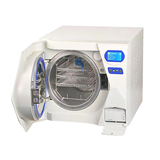
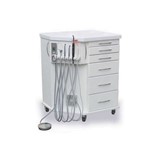



-160x160-state_article-rel-cat.png)





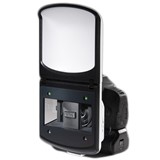
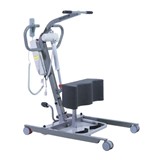
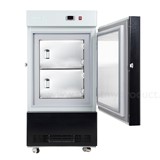
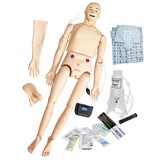





-205x205.jpg)
